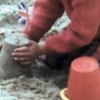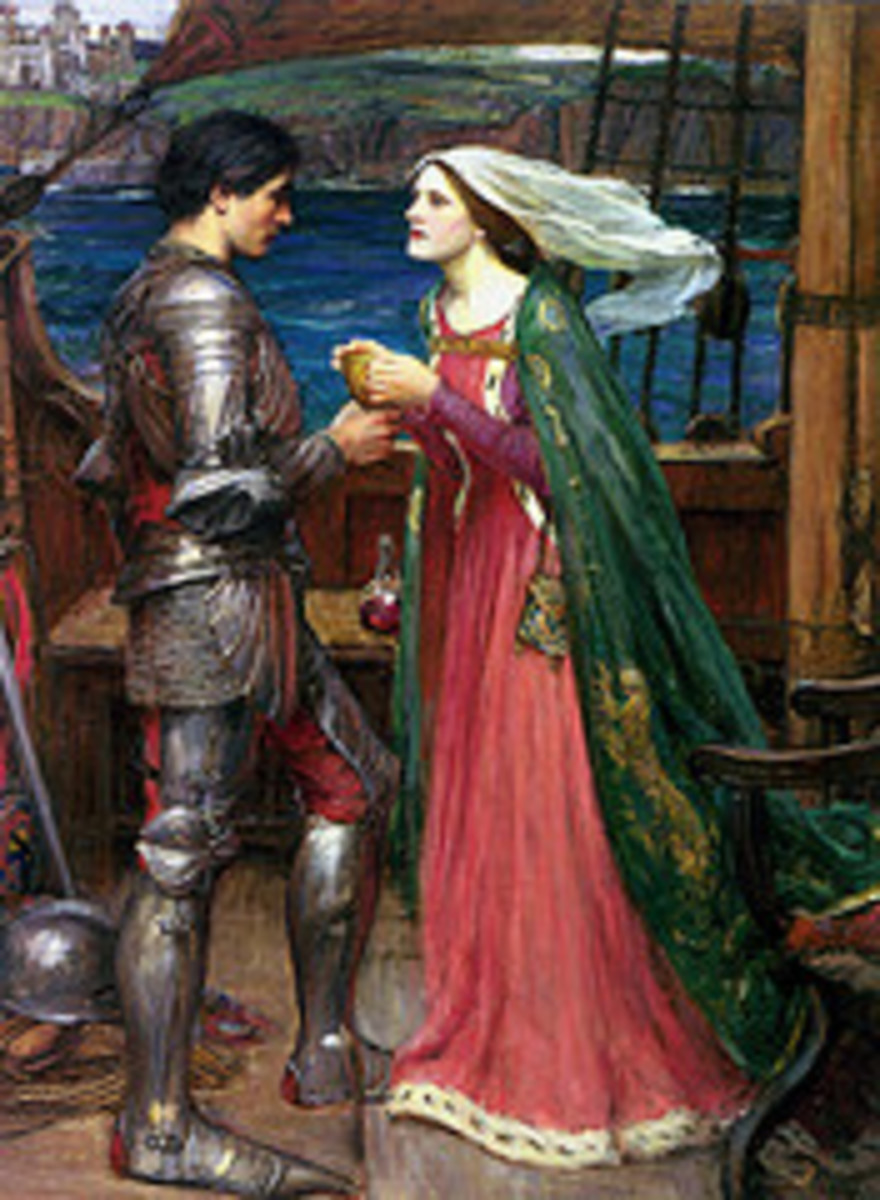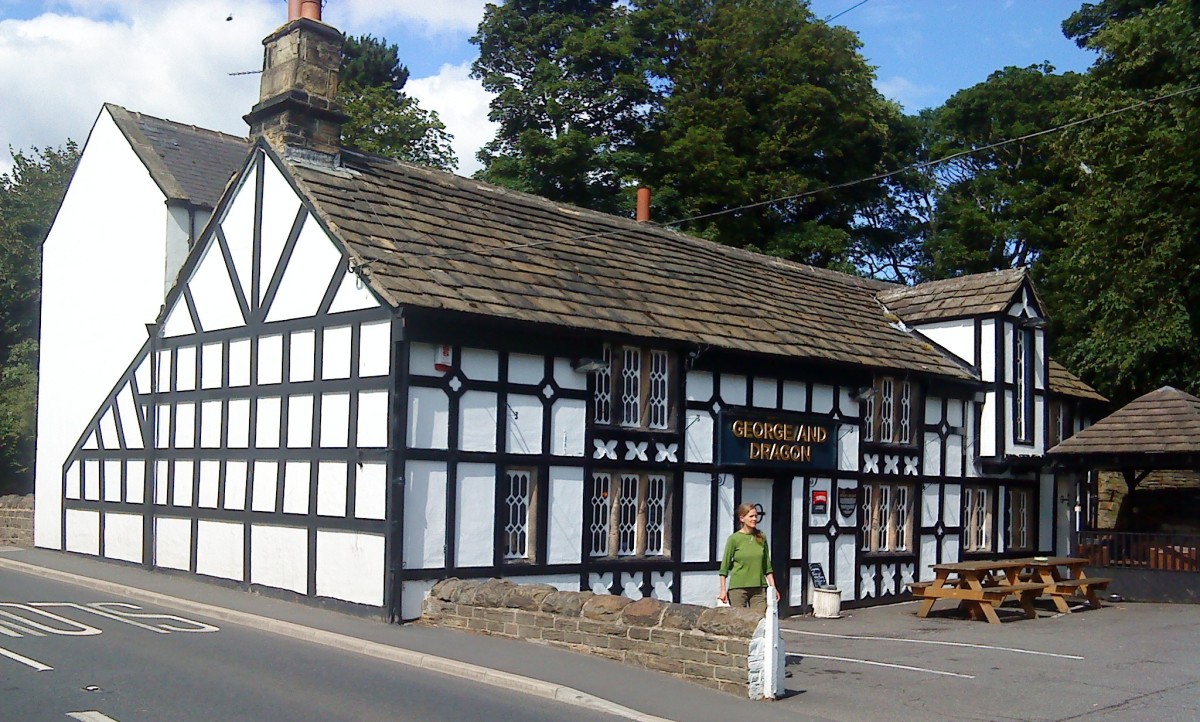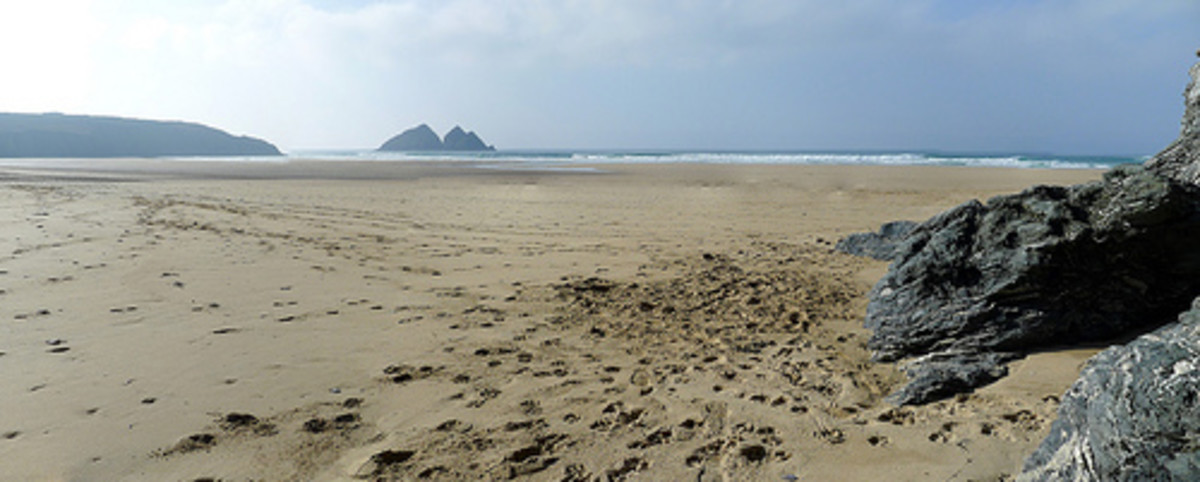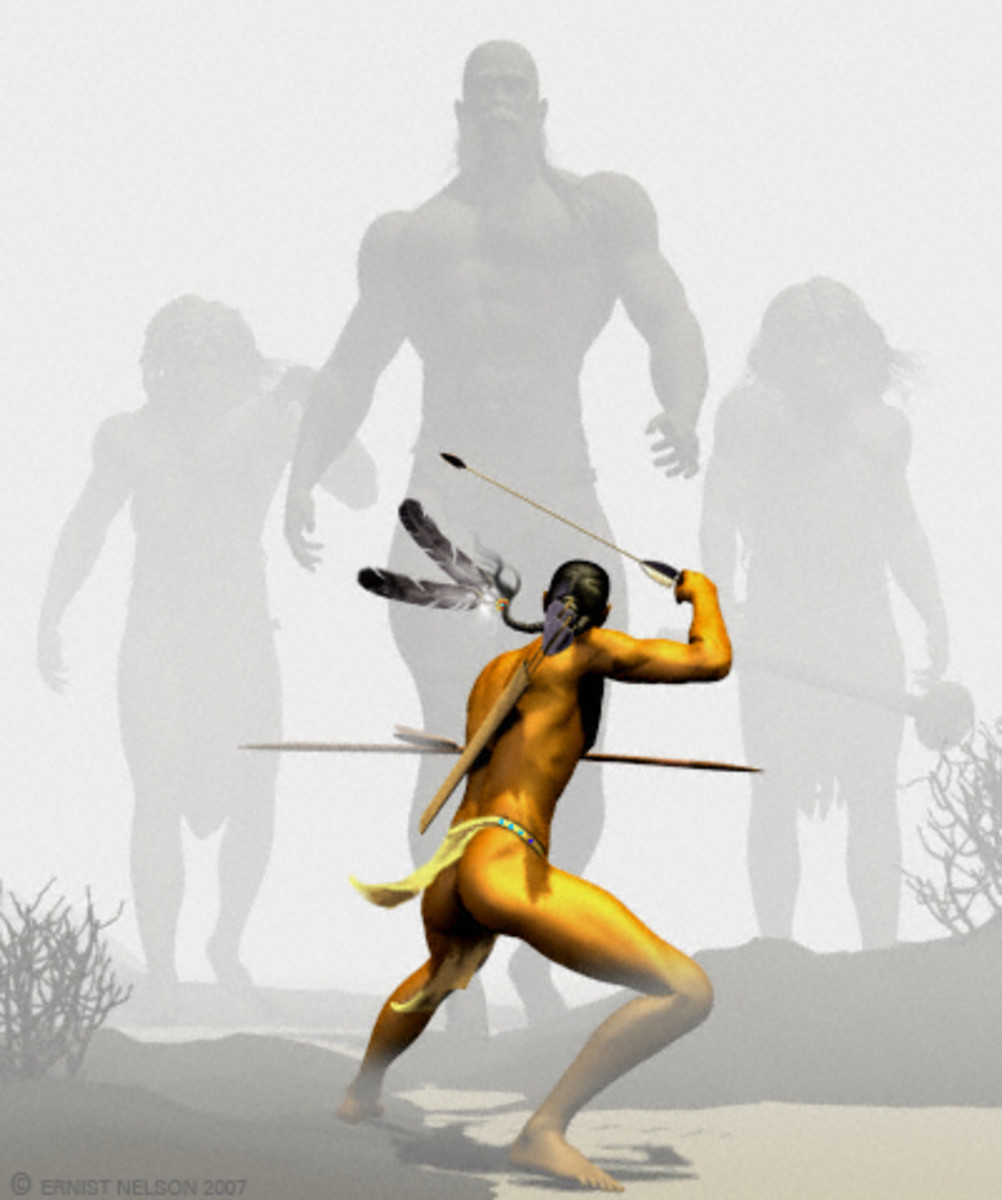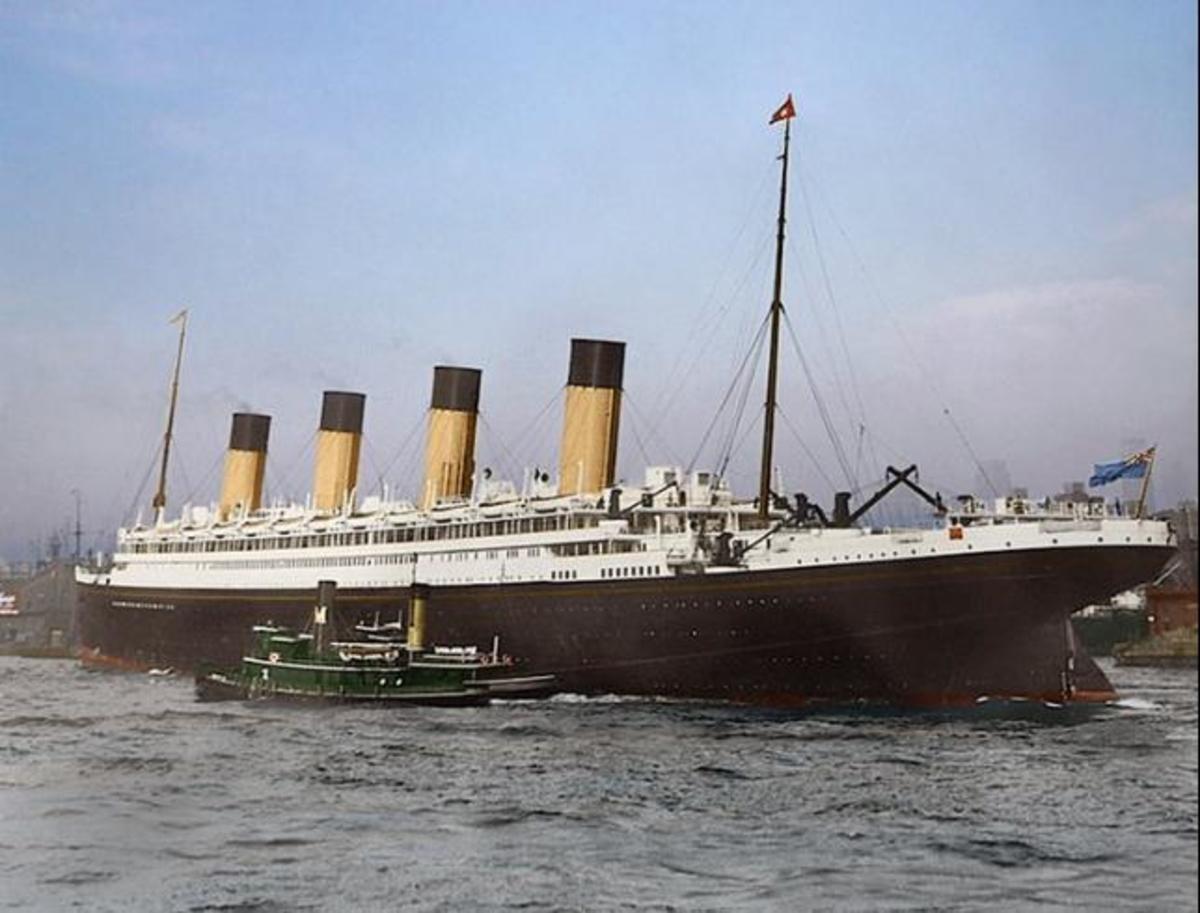St Levan's Hermit Cell and St Levan's Church
I can still remember my first visit to St Levan's Hermit Cell, the Holy Well of St Levan and St Levan's Church with its stone carrying an End of the World prophecy.
It was a sunny summer's day in the late 1990s when I parked alongside the church, having been directed to the spot by my sister, who has walked a lot of the Coastal Footpaths around Cornwall. She then proceeded to take me on a trek across the road and down the path, pointing out St Levan's Cell and well before we spent a couple of hours stretched out on the large rocks on the beach below and swimming in the steeply banked waters - there are no lifeguards on this beach and reaching it can be quite tricky and treacherous as you clamber over large boulders, so not to be attempted if you have mobility issues or have a pushchair.
This whole area was first inhabited and built upon the time when St Levan settled here, perched on the cliffs, in his small hermit cave.
This piece is intended to help a visitor to make the most out of a visit to the area, by pointing out what you can see and how it all fits together.
St Levan Beach: Porthchapel
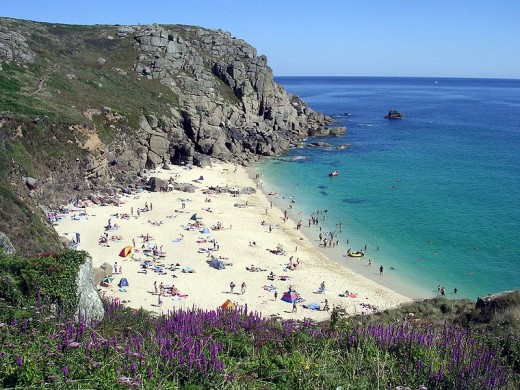
St Levan the Martyr:
- St Levan was martyred on 12 November 656AD, although the local St Levan Feasten tide is on 15 October each year.
- It is possible he was even a King of Cornwall at some point, or closely related to King Mark of Cornwall (cousin).
Who Was St Levan?
St Levan is one of Cornwall's many Saints, who lived in the 6th/7th centuries. He arrived from Ireland, some say on a stone, others say, on a leaf. This method of arriving in Cornwall is commonplace in the ancient stories.
The name and spelling of his name, can vary a little, and known names include: St Selevan, Salomon, Selyf,
If you dig around in the history of Cornwall you'll find almost every small village and town was established by a Saint, arriving often by peculiar means, who set up a hermit's cell, which then grew into a church and community.
St Levan's Baptistry
What you can see of St Levan's Baptistry and Hermit Cell these days is just a small, square, outline of a room. Three walls are evident, buit of stone, but there's no front/door and no roof. This part was probably the sleeping quarters of St Levan. St Levan's Hermit Cell measured about 9'6"x6'.
Adjacent to this, to the East, there are the obscured remnants of a larger room - believed to be St Levan's original chapel and measuring about 12'x6'. Dating from about the 8th century, St Levan's Chapel is one of the oldest of its kind in Cornwall.
These days you can tell you're at the right place as there's an emergency telephone on a post right alongside it. If you stand in the cell and look out to sea, to the left of you is the second, larger, chamber.
Britain's Secret Homes
Rory McGrath visited St Levan's Cell and St Levan's Church during the filming of Britain's Secret Homes, a programme looking at unusual homes and homes with secrets and pasts. St Levan's Cell was #26 on the list.
Rory McGrath met with Craig Weatherhill at the cell and local Bridget Hugh-Jones at the stone. It was Bridget who recalled that, as a small child it was quite a struggle to pass through the stone, but that now the gap is wider. Bridget Hugh-Jones is a member of "THE FRIENDS OF ST LEVAN", a charity.
St Levan's Holy Well
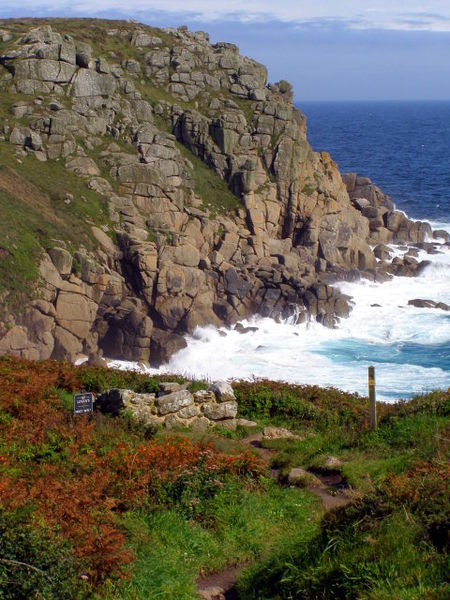
St Levan's Holy Well
St Levan's Holy Well is close to the Hermit Cell of St Levan - there's a flight of 40-50 stone steps leading down to it.
These are the original medieval steps, leading from the beach at Porthchapel down to the St. Levan Holy Well which were discovered and uncovered in the 1930s as part of an excavation by Rev. H T Valentine and Dr Vernon Favell.
The holy well of St Levan is alongside the path on the clifftop above Porth Chapel beach. Here you will see three walls of large granite blocks, about 4' high, and a floor which is a huge slab of granite covering the spring which flows out at the southern end.
Below the well there used to be another ancient chapel and burial ground, lost over the cliffs.
Locals called the well Parchapel Well and those recorded 160 years ago by Blight (1850s) remembered how, in their youth, they'd visit Parchapel Well twice a year, for repairs and to clean it out and clear the ground around it. The steps leading down to the well were also weeded, cleared and sanded.
Parchapel Well would be dressed at the beginning of May every year as well as at Feasten tide.
Water from St Levan's Well was collected and taken to the church for baptisms.

St Levan's Church Filming:
- St Levan's Church was featured in the first series of BBC Dr Who.
- St Levan's Church was visited as part of the Britain's Secret Homes series, when Rory McGrath explored the stone outside, having visited St Levan's Hermit Cell on the cliffs.
St Levan's Church: The Stoup
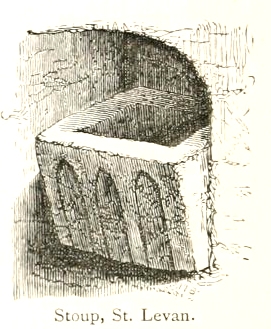
St Levan's Church
While St Levan's ancient chapel and burial ground have long-since disappeared over the cliffs, The current St Levan's Church is medieval, having been built on the site of an earlier 9th/10th century church.
In the 12th century, the church was rebuilt and in the 15th century it was extended. In 1876 St Levan's church was restored. The tower now contains three bells dating from 1641, 1754 and 1881.
The church used to be what is referred to as a "Royal Peculiar", these are churches that fall directly under the jurisdiction of the monarch, and not to any local bishop. St Levan's Church is part of The Deanery of St. Buryan and stopped being a Royal Peculiar in 1850.
St Levan's Church: The Stoup
The Stoup is just inside the entrance to St Levan's Church. In "Churches of West Cornwall", published in 1858 this was described as:
"Entering by the porch, the first object to be noticed is the stoup, which is perfect. It is square, and ornamented with simple arcading on one side. "
He made a line drawing of the stoup.
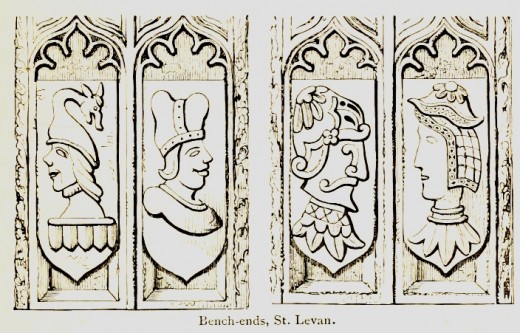
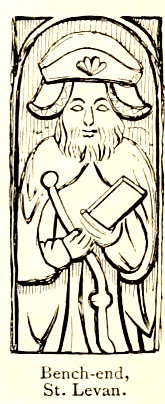
Carvings on Pews: The Bench Ends.
Inside the church of St Levan, take a close look at the ends of the pews - they date back to the 14th century. There is a pre-Reformation pew-end with two fish on it, a reference to the story of St Levan's fishing legend.
There is also a modern sculpture in the church that has three fish - an error borne out of creativity perhaps? Or merging the iconic fish with the father/son/holy ghost?
Other pews have other carvings. One is of a monk - I wonder if that is St Levan himself!
Many of the features of the church were drawn and published in "Churches of West Cornwall ; with notes of antiquities of the district (1885)"

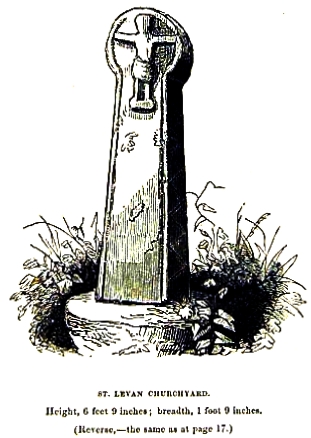
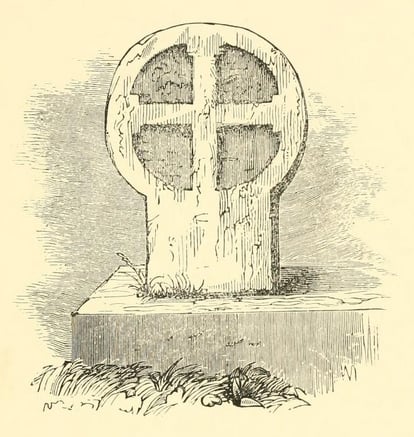
Stone Crosses in the Churchyard
There are three stone crosses in the churchyard at St Levan, dating from 6-7AD. You'll find the largest of these close to the St Levan's Holy Stone. The holy stone was from pagan times. The six Celtic crosses were placed there in Christian times. The largest stone was near the holy stone and five others were placed at each of the entrances to the churchyard.
Only two of the other five stone crosses still remain at the churchyard.
In 1856 Blight drew these crosses and published them in his book entitled "Ancient crosses & other antiquities in the west of Cornwall"
The Three Crosses:
- The cross near the holy stone is 6'9" tall and 1'9" wide.
- The second cross he drew was smaller and in the churchyard wall, in the north-east corner, close to the Coffin Stone. Blight's drawing says this one is 2'6" tall and 1'11" wide. It is carved back and front in the same design.
- The third is on the footpath towards Rospletha
St Levan's Coffin Stones
There are two Coffin Stones: a large, coffin-shaped stone, One is at the entrance to the church and one is at the North entrance. Both of them are granite cattle grids. Coffins would be rested here, after being carried across the fields, before the congregation, family and mourners arrived for the start of the burial service.
St Levan's Coffin Stone:
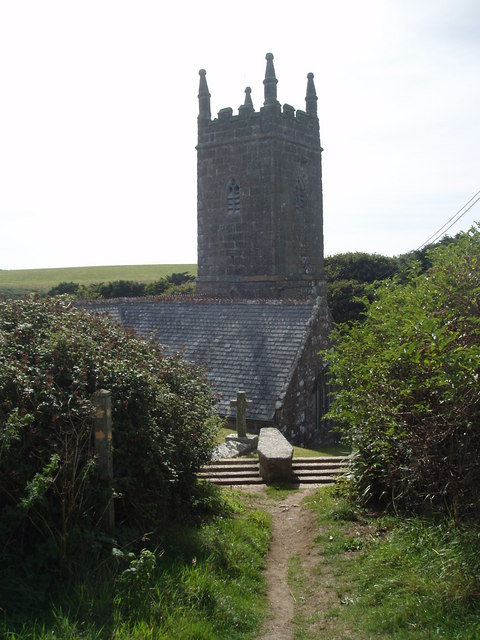
St Levan's Stone:
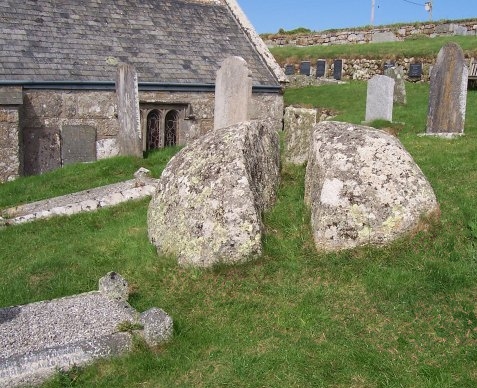
The Stone's Prophecy:
The rock in St Levan's Churchyard is seen as sacred. St Levan is supposed to have split the stone in two with his hand, or staff.The prophecy is that when a pack horse with panniers can be ridden through it, the world will end:
The prayer St Levan said over the holy stone:
"When with panniers astride
A pack horse can ride,
Through St Levan's stone,
The world will be done"
St Levan's Stone in Churchyard
In the churchyard right outside the door of St Levan's Church is the stone that St Levan is supposed to have sat on when he returned from fishing - he wanted to leave a memorial to himself, so one day he hit the stone with his staff (walking stick) and it split in two.He then prayed over the stone, uttering the four lines prophecising the end of the world.
The legend says that when a packhorse will panniers can fit through the gap in the stone's, it's the end of the world.
Locals do say that the stone used to be much harder to walk through - and that the gap is becoming wider.
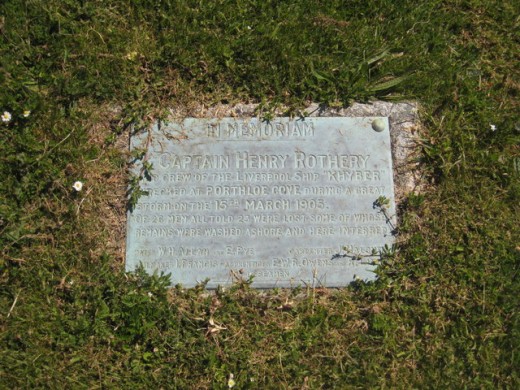
Mass Grave of Shipwrecked Souls
The Liverpool ship Khyber was wrecked at nearby Porthloe Cove on 15 March 1905. Captain and Henry Rotherby and 23 crew members were all drowned. In the south-west corner of St Levan's churchyard, near the tower, is a large square burial plot, which is the mass grave where they were all buried. A plaque marks this grave.
As a result of this loss of life, a breakwater was built at Sennen Cove, enabling the lifeboat to be launched in stormy weather
Grave of Captain Richard Wetheral & The Ghostly Bell
Close by you can also see the grave of Captain Richard Wetheral of Scilly. He drowned when the Scillonian brig, the Aurora, went down off Land’s End on the Runnel Stone on 18 December 1811. The story says that if you hear the bell of his ship you'll die within a year.
The Penguin Book of Ghosts: Haunted England says: "It is said that the ship sprang a leak and sank and he was drowned off Gwennap Head near the Rundle or runnel Stone. "This grave is regarded with fear and wonder by many persons" wrote William Bottrell in 1873. A ghostly bell was said to strike the hour and half-hour in his grave, exactly as on shipboard, and this had gone on since he was buried. The sound could be heard most clearly at midnight, for it was around midnight that he made his crew take to the boat. As she went down, the crew heard him strike "eight bells", signifiying the end of a watch. This was the captain's last farewell as he went down with his ship, and those who hear it ringing from the have have due notice that their own watch is over"

Feasten Tide
Feasten tide, for St Levan, is 15 October.
This is one of the days when locals would celebrate and visit the well.
St Levan's Well
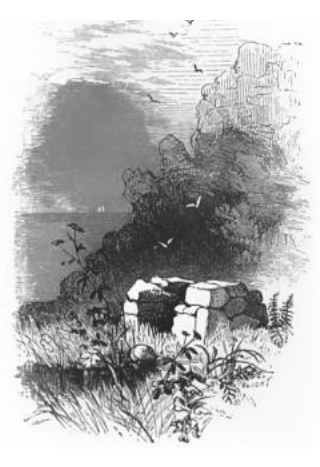
Baptismal Water:
The water from St Levan's Holy Well is still collected and used for baptisms today.
William Bottrell, 1873
William Bottrell, in 1873, also tells us that the old folks said that until about 50 years before it was a custom on Christmas eve for carol singers to assemble in the town around a rock at Sowah called the Garrack Zans (holy rock) before moving on to Roskestal to sing around the Garrack Zans there. Everybody would then go singing down to Parchapel Well, where they'd meet with singers from Treen and other "lower-side places". There they'd sing many carols, but one was never forgotten:
Go thee wayst out, child Jesus;
Go thee wayst out to play
Down by God's holy well
I see three pretty children
As ever tongue can tell.
When Bottrell visited in the 1870s, the steps were hidden and overgrown, but he was told that one tradition was that great sinners did penance by crawling over the rough stones on their bare knees and that the devout who desired or aspired to acquire extraordinary grace, or indulgence, scrambled up all the way on bare knees from the chapel door to the holy well. (Bottrill, 1873, p148-149)
The Legends of St Levan
St Levan would fish from Rospeltha cliff, on rocks nearby, still called Old St Levan's Rocks - it is said it is still possible to identify the route he took across Rospeltha fields. His route crossed corn fields and grass; the grass to St Levan's fishing spot grows greener and the corn grows finer grain.
One day, he was fishing and the story says that he was after one fish, so when he caught two together he threw them back, he tried again, but caught the same two fish again, so tried again - and the same two fish were caught. Having caught the same fishes three times he decided it was fate that he should have those fish and took them home.
St Levan's sister, a midwife from Breage, was visiting with two children, who were fed on the fish and choked on the bones. These fish, bream or chads, are still called "chuck cheeld" to this day, which means "choke child". In Bottrell's book of 1873, he wondered if the stone hearth, where the fish were cooked, is still present at St Levan's cell.
There are carvings of two fish, joined at the head, in the pews of St Levan's Church.
Location
On leaving the churchyard by the main gate, cross over road and follow the track signposted to Porthchapel beach.
St Levan's Holy Well and Baptistry (and his hermit cell alongside) lay on the footpath en-route to the beach.
Bibliography:
A lot of research and reading goes into bringing you this information, among the books and information which form the backbone of this article are:
- A Week at the Land's End, John Thomas Blight, 1861.
- Ancient crosses and other antiquities in the west of Cornwall (1858), Blight, 1858
- Traditions and Hearthside Stories of West Cornwall, Vol 2, William Bottrell, 1873.
John Thomas Blight was a local artist, author and antiquary, A Week at the Land's End is his most well known book - after he wrote it he suffered a mental breakdown and went into a mental asylum, where he spent the rest of his life. Although rumoured he died in October 1884, but his real death came on. 23 January 1911, still in the asylum. His pictures of the antiquaries in Cornwall are a great source of information, since so many of them have disappeared since.
William Bottrell was a Cornish folklorist, who gathered local myths, legends and stories across Cornwall in the late 1800s.
